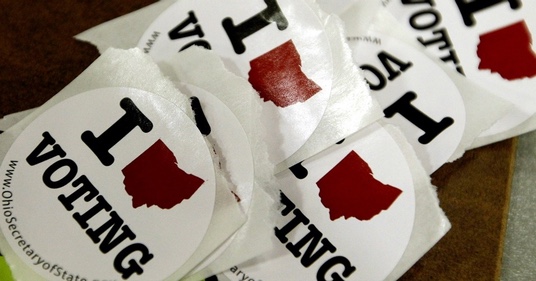
So Bernie Sanders dropped out of the Democratic presidential primary last week. Whether you supported him or the presumptive nominee Joe Biden (whom Sanders has now endorsed), you may be saying, “That means I don’t have to vote in the primary, and anyway it’s not worth the hassle of sending back the mail-in ballot application, waiting for the ballot, filling it out and mailing it back.”
Wrong! Your primary ballot contains many other races and issues that your vote is far more likely to influence than a presidential race: races for Congress, state legislature, county council in Cuyahoga County, and of course, judicial races. Ohio voters have until April 27 to request and return their ballot in what is now an all-mail race. Do it.
Here’s a dramatic example:
In 2017 a race for the Virginia House of Delegates (their legislature) was literally tied. Initially the Democrat Shelly Simonds was believed to have won by one vote, but a ballot was disqualified. As a result, her name and that of her opponent, Republican David Yancey, were put in film canisters (a very pre-digital move!), which were shuffled and the one drawn was the winner. It was Yancey. That gave the Republicans a 51-49 majority. (Later it was discovered that a group of predominantly Democratic ballots that should have been cast in this district were cast in an adjoining one. After redistricting, Simonds got revenge by beating Yancey in 2019).
How impactful could this have been? In early 2019, Virginia Governor Ralph Northam, a Democrat, was involved in a scandal that had politicians of both parties calling for his resignation. Shortly after that, both the Democratic lieutenant governor and the Democratic attorney general, second and third in the line of succession, were also found to have been involved in things that attracted criticism and calls for their resignation. If all three had resigned, the next in the line of succession was the Speaker of the House of Delegates who, because of that tie, was a Republican.
Fortunately, all of them weathered the storm and, with a new Democratic majority in the legislature, Northam has just signed bills for strong voting rights reform (including expanded early voting, repealing disenfranchising ID laws and making Election Day a holiday); outlawing discrimination against LGBTQ people; enhanced gun control; decriminalizing marijuana; and guaranteeing women’s reproductive rights.
One vote.
Now that Ohio’s primary is all mail-in, you’ve got time to do some research. If you don’t have your ballot yet, go to your county’s board of elections and enter your address. It will show you what will be on your ballot.
In either case, take an hour or two to Google the names of the candidates in contested races. Find out who they are. In Cuyahoga County, where there are four contested judicial primaries, the website Judge4Yourself is a good start. Five bar associations rate the candidates excellent, good, satisfactory or not recommended. Each candidate submits a resume which you can — and should — read on the website, especially if two or more candidates get generally decent ratings. Judge4Yourself is a guide, not a final word. You may prefer the candidate with a background as a defender, or the one who worked as a social worker before going to law school, or the one who volunteers at an animal shelter. That information is available there. Educate yourself (please don’t choose the most appealing-sounding name!) — and then vote.
You should have received a postcard from the Ohio Secretary of State about how to get a ballot application. They were sent to all registered voters. (You can even download one online and print it at home!) Fill in your ballot application and get it in the mail; and then be sure to get your ballot in the mail by April 27 (it will count if it’s postmarked by then). You can find detailed instructions at the Secretary of State’s website.